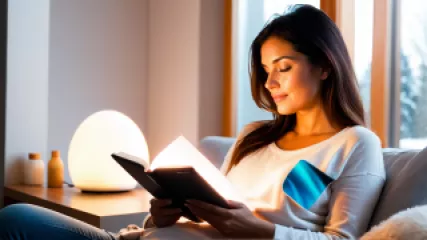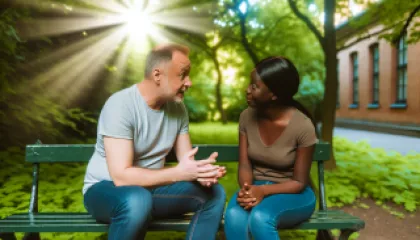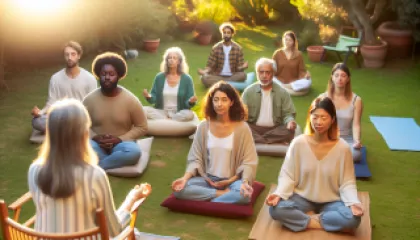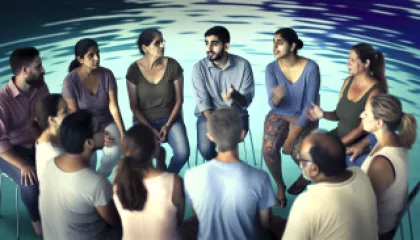Managing Seasonal Mood Disorder with Light Therapy
Welcome to our step-by-step tutorial on managing Seasonal Affective Disorder (SAD) with light therapy. If you find yourself experiencing a decline in mood and energy during the winter months, you may be one of the millions of people affected by this seasonal mood disorder. Fortunately, there are effective treatment options available, and light therapy is one of them.
What is Seasonal Affective Disorder (SAD)?
Seasonal Affective Disorder, commonly known as SAD, is a type of depression that occurs regularly during specific seasons, most commonly winter. It is believed to be triggered by a lack of sunlight and the changes in the body's internal clock.
People with SAD often experience symptoms such as:
- Depressed mood
- Lack of energy
- Difficulty concentrating
- Increased appetite, especially for carbohydrates
- Weight gain
- Social withdrawal
- Sleep disturbances
If you are experiencing these symptoms, it is important to consult with a healthcare professional for an accurate diagnosis and to discuss treatment options. Light therapy is one of the most common and effective treatments for SAD.
What is Light Therapy?
Light therapy, also known as bright light therapy or phototherapy, involves exposing yourself to a bright light source that mimics natural outdoor light. This exposure to bright light helps regulate your body's internal clock and can alleviate the symptoms of SAD.
The light used in therapy is significantly brighter than indoor lighting but is considered safe and does not contain harmful UV rays. Many light therapy devices are available on the market, ranging from lightboxes to dawn simulators.
Step 1: Consult with a Healthcare Professional
Before starting any treatment, it is crucial to consult with a healthcare professional, such as a psychiatrist or primary care physician, who can accurately diagnose your condition and determine if light therapy is an appropriate treatment option for you.
Your healthcare professional will consider factors such as your medical history, current medications, and the severity of your symptoms before recommending light therapy. They may also provide guidance on the duration and timing of your light therapy sessions.
Step 2: Choose the Right Light Therapy Device
There are various light therapy devices available, so choosing the right one for your needs is essential. Consider the following factors:
- Light Intensity: Look for a device that provides at least 10,000 lux of light intensity. This level of brightness is considered effective for treating SAD.
- UV Emission: Ensure that the device emits minimal to no UV rays to avoid any potential harm to your skin or eyes.
- Size and Portability: Consider the size and portability of the device. Will you be using it primarily at home or would you like the flexibility to take it with you when traveling?
- Features: Some devices offer additional features such as adjustable brightness, timers, and different light color options. Determine which features are important to you.
Research different brands and read customer reviews to help guide your decision. It may also be helpful to discuss your options with your healthcare professional.
Step 3: Establish a Routine
Consistency is key when it comes to light therapy. Establishing a regular routine will ensure that you receive the maximum benefit from your sessions. Here are some tips:
- Timing: Determine the best time of day for your light therapy sessions. Most experts recommend using the lightbox in the morning, within the first hour after waking up.
- Duration: Start with shorter sessions, typically around 10 to 30 minutes, and gradually increase the duration if needed. Be mindful of any adverse effects such as eyestrain or headaches and adjust accordingly.
- Consistency: Aim to use the light therapy device every day, ideally at the same time. Consistency will help regulate your body's internal clock and alleviate symptoms more effectively.
Integrating light therapy into your daily routine may require some adjustments, but the benefits can be well worth it.
Step 4: Positioning and Distance
Proper positioning and distance from the light source are crucial to ensure effective light therapy.
- Position: Place the light therapy device on a flat surface at eye level or slightly above. Avoid looking directly into the light, as this may cause eye discomfort. You can position the light to the side while reading, working, or engaging in other activities.
- Distance: Follow the manufacturer's guidelines for the recommended distance between you and the light source. Typically, it ranges from 16 to 24 inches.
Experiment with different angles and distances to find the most comfortable and effective position for your light therapy sessions.
Step 5: Incorporate Light Therapy into Your Daily Routine
Make light therapy a part of your daily routine by integrating it into activities you already enjoy. Here are some ideas:
- Reading: Use your light therapy device while reading a book or newspaper.
- Working: Position the lightbox near your workspace to receive light therapy while working.
- Relaxing: Set aside time specifically for light therapy sessions, allowing yourself to relax and unwind during the exposure.
By incorporating light therapy into activities you already engage in, you can make it a seamless part of your daily life.
Step 6: Monitor Your Progress
Keep track of your symptoms and mood throughout your light therapy treatment. Monitoring your progress will help you determine if the treatment is effective and if any adjustments need to be made.
Consider keeping a journal where you record your daily mood, energy levels, and any changes in symptoms. This information will be valuable when discussing your progress with your healthcare professional.
Step 7: Explore Additional SAD Support
While light therapy can be highly effective, it may not be the only treatment option that works best for you. Consider exploring additional support measures such as:
- Mental Health Coaching: Work with a mental health coach who specializes in SAD to develop coping strategies and explore other treatment options.
- SAD Support Group: Join an online or local support group where you can connect with others experiencing SAD and share your experiences.
- Online Therapist: Consider seeking therapy from a licensed online therapist who has experience in treating seasonal depression.
Remember, everyone's experience with SAD is unique, so finding the right combination of treatments and support can make a significant difference in managing your symptoms.
Conclusion
Light therapy is an effective and accessible treatment option for managing Seasonal Affective Disorder. By following these step-by-step guidelines, you can incorporate light therapy into your daily routine and alleviate the symptoms of SAD. Remember to consult with a healthcare professional to ensure that light therapy is the right treatment option for you and to monitor your progress throughout the process.
Take control of your seasonal mood disorder and embrace the brighter days ahead!






